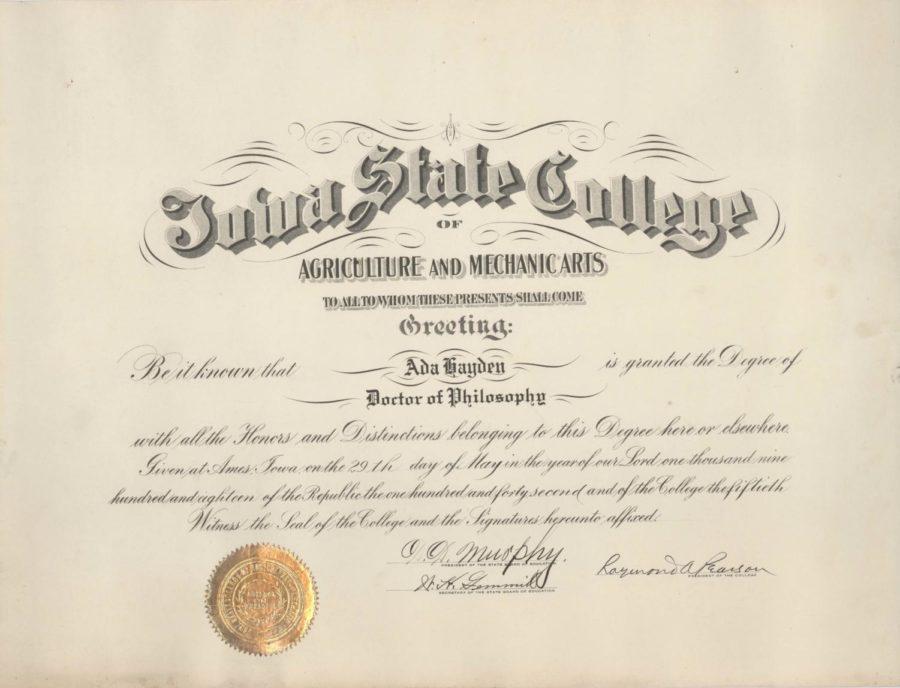Ask Adonijah: Who was Iowa State’s first female Ph.D. graduate? Has there always been Greek housing for students?
April 17, 2018
Editor’s note: “Ask Adonijah” is a contributed piece from the Iowa State University Library Special Collections and University Archives. The piece is named after Adonijah Welch, who was Iowa State’s first president, and seeks to answer community members’ questions about the history of Iowa State. Have a question? Let us know by emailing [email protected].
Dear Adonijah:
Who was Iowa State’s first female Ph.D. graduate?
With spring commencement fast approaching, this first question seems very appropriate. Madison asks, “Who was the first female to receive a Ph.D. from Iowa State?”
If one has lived in Ames for any length of time then the name Ada Hayden should be familiar, due to the large recreation area on the north edge of town that bears her name. Ada Hayden was the first female to earn a doctorate from Iowa State, and only the fourth student overall, having received her advanced degree in botany exactly 100 years ago this year.
Born in rural Ames, she came to Iowa State for her undergraduate education and then earned a master’s degree in botany from Washington University in St. Louis. She returned to her hometown to continue her studies and became an instructor of botany at Iowa State. Dr. Hayden was named Assistant Professor in 1920 and spent a long career teaching botany and researching Iowa’s native plants. During her career, she added thousands of plant specimens to the campus herbarium. She was particularly interested in Iowa’s prairie ecology and was an important figure in early prairie preservation efforts in the state.
Dr. Hayden did not receive much public recognition for her work during her lifetime and, for reasons we can now only speculate on, she was never promoted beyond Assistant Professor during her long career at this school. As her contributions became more widely known and respected, so, too, did the posthumous honors. She was named to the Iowa Women’s Hall of Fame; the state named one of the last remaining native prairie areas in Iowa after her, the Hayden Prairie State Preserve in Howard County; and the campus herbarium was named in her honor.
Has there always been Greek housing for students?
Darin asks, “Has there always been Greek housing for students at Iowa State?”
The first fraternity, Delta Tau Delta, was established on campus in 1875, followed shortly after by Pi Beta Phi sorority two years later. I never really had a concern with social fraternities when I was President, but many of the students did.
In the early years, the vast majority of students who were non-members referred to fraternities and sororities as “secret societies.” None of these organizations had an actual house in those days, so the students would borrow classrooms in the evenings to hold their meetings. The animosity between society and anti-society students grew to the point that, in 1888, a fraternity banquet was inundated with cyanogen gas and the students had to flee the building! It was not a good situation.
President Beardshear actually banned social fraternities and sororities shortly after he arrived in 1891. This had the desired effect of calming the internal strife between the students. Social societies would not be allowed back onto campus until 1904, largely due to a significant housing shortage caused by the fire that burned the Main Building to the ground. For the past century, fraternities and sororities have played a significant role in the lives of many Iowa State students.

















